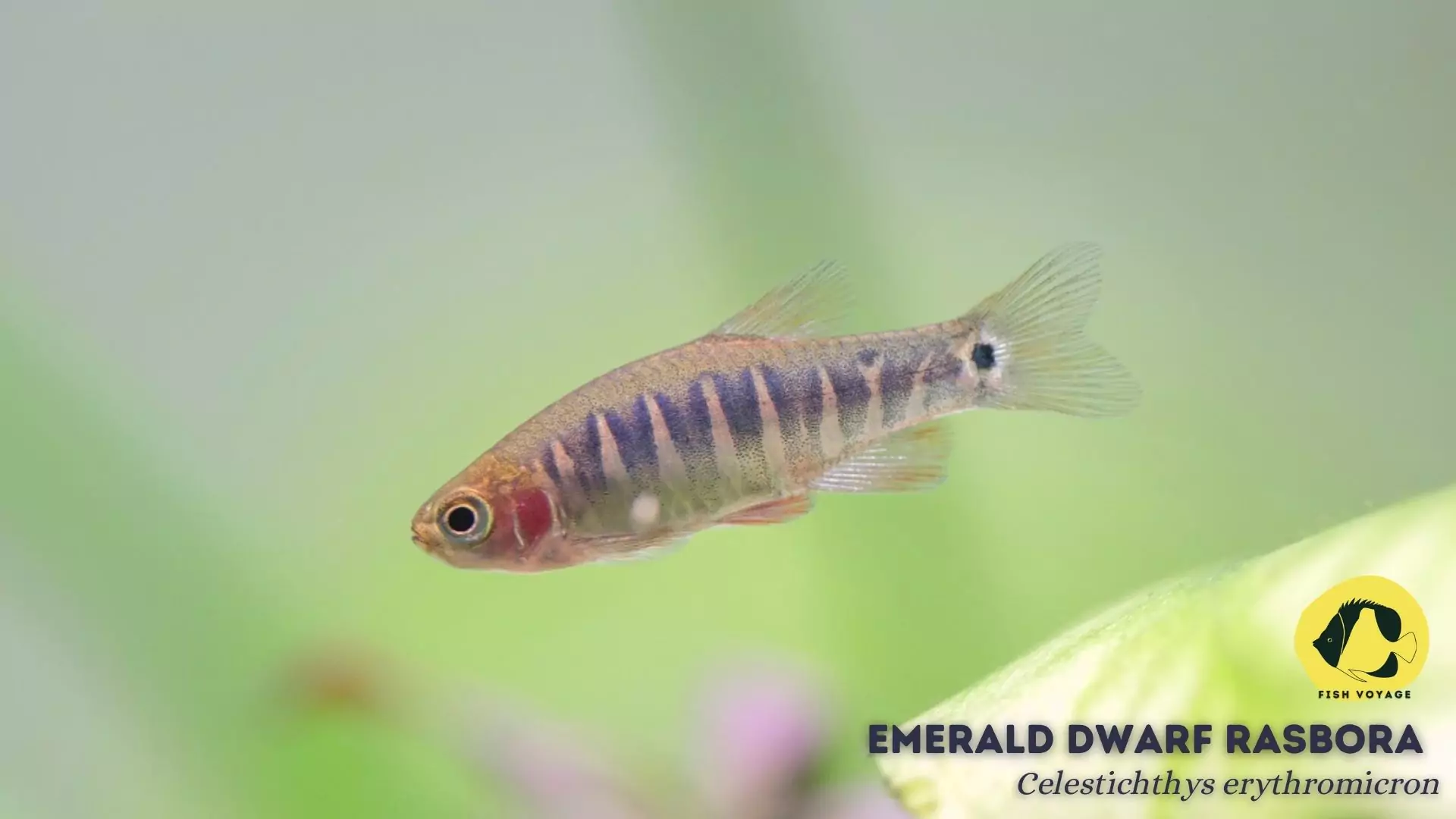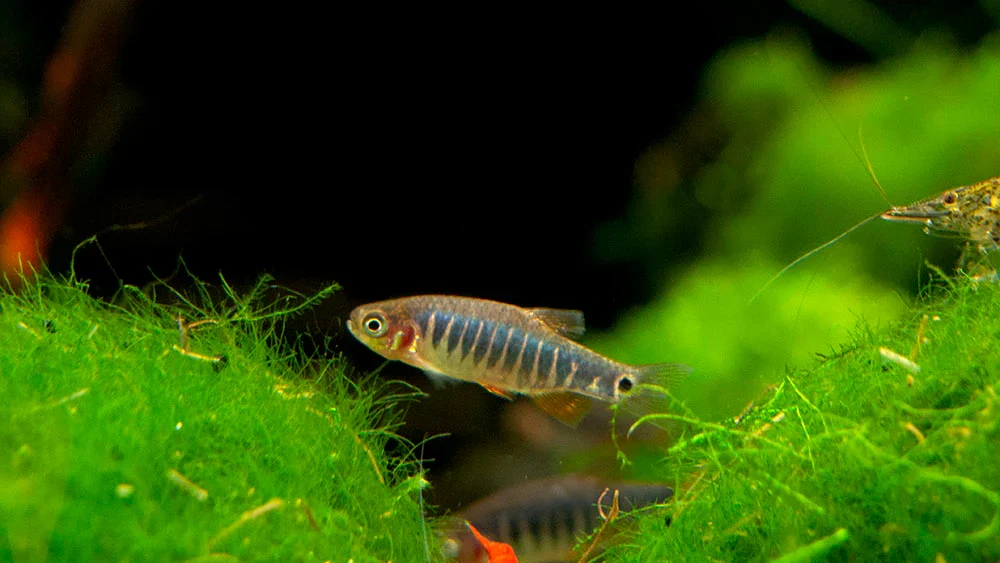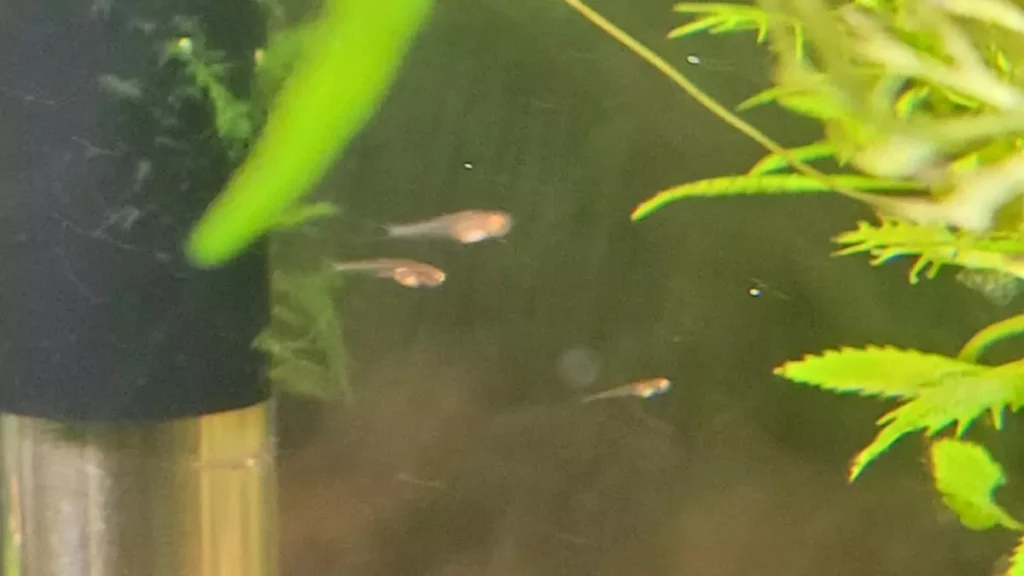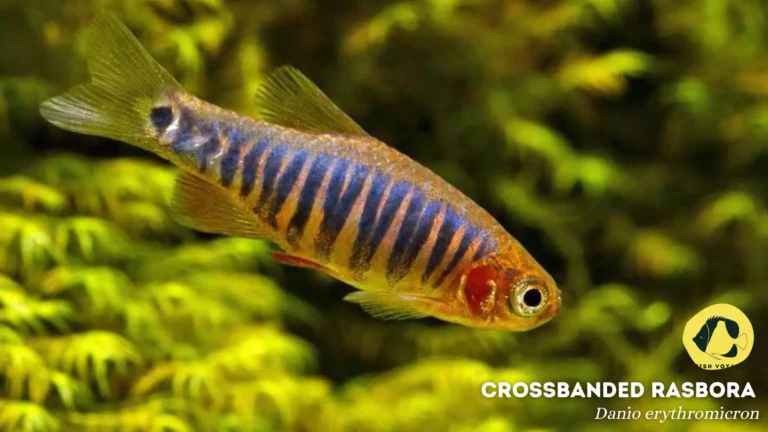The Ultimate Guide to Emerald Dwarf Rasbora Breeding

The Emerald Dwarf Rasbora, a captivating species known for its vibrant colors and peaceful demeanor, has become a cherished gem in the aquarium hobby. Characterized by its emerald-green hues and delicate size, this species has gained popularity among enthusiasts seeking to enhance their aquatic landscapes. Beyond their aesthetic appeal, these rasboras are revered for their relatively straightforward breeding habits, making them an accessible choice for both novice and experienced hobbyists. However, as we delve into the intricacies of Emerald Dwarf Rasbora breeding, it is imperative to underscore the significance of responsible breeding practices.
By approaching this endeavor with mindfulness and ethical considerations, we contribute not only to the well-being of these fascinating creatures but also to the overall health and sustainability of the aquarium community. Join us on this exploration of Emerald Dwarf Rasbora breeding, where passion meets responsibility in the pursuit of a thriving aquatic environment.
Understanding Emerald Dwarf Rasbora
Physical Characteristics and Traits
- Vibrant Colors: The Emerald Dwarf Rasbora is renowned for its striking emerald-green coloration, creating a visually appealing spectacle in any aquarium.
- Compact Size: With a size ranging from 0.6 to 0.8 inches, these petite fish bring a sense of delicacy and charm to aquascapes.
- Distinctive Fin Structure: Notable for their forked tails and prominent dorsal fins, these rasboras exhibit unique fin configurations that add to their overall allure.

Natural Habitat and Behavior
- Native Waters: Originating from the blackwater streams and peat swamps of Southeast Asia, the Emerald Dwarf Rasbora is acclimated to soft, acidic water conditions.
- Schooling Nature: In their natural habitat, these rasboras are social creatures, exhibiting a preference for forming tight-knit schools. Mimicking this behavior in captivity enhances their well-being.
- Peaceful Demeanor: Known for their gentle disposition, Emerald Dwarf Rasboras coexist harmoniously with a variety of tankmates, making them an excellent choice for community aquariums.
Key Considerations for Successful Breeding
- Optimal Water Parameters: Maintaining a stable and suitable environment is crucial. Aim for slightly acidic water with temperatures between 75°F to 82°F and consider the use of peat filtration to simulate their native conditions.
- Adequate Tank Size: While these rasboras don’t require a vast space, a well-sized tank (10 gallons or more) ensures they have ample room for breeding activities and the subsequent care of fry.
- Strategic Lighting: Mimic dawn and dusk lighting conditions to encourage natural breeding behavior. Provide areas with dense vegetation for spawning and as safe havens for fry.
In comprehending the physical traits, natural habitat, and behavior of the Emerald Dwarf Rasbora, we lay the foundation for successful breeding. Understanding their unique characteristics equips enthusiasts with the knowledge needed to create an environment conducive to the well-being and reproduction of these captivating aquatic companions.
Setting up the Breeding Tank
Tank Size and Water Parameters
- Optimal Tank Size: Select a tank with a minimum size of 10 gallons to provide sufficient space for breeding activities. Larger tanks can accommodate multiple pairs, fostering a thriving community.
- Water Temperature and pH: Maintain a stable environment with temperatures ranging between 75°F to 82°F. Aim for a slightly acidic to neutral pH level (6.0 to 7.0) to mimic the conditions of their native habitats.
Ideal Tank Decorations and Hiding Spots
- Subdued Lighting: Create a tranquil ambiance with subdued lighting, resembling the dim conditions of their natural habitats. This encourages a stress-free environment conducive to breeding behaviors.
- Live Plants: Incorporate live plants such as Java Moss and dense floating vegetation to provide suitable spawning sites and hiding places for both adults and fry.
- Cave-Like Structures: Utilize decorations like small caves or PVC pipes to offer secure hiding spots for the breeding pair and a sanctuary for the fry.
Importance of a Well-Cycled Tank
- Establishing Biological Filtration: A well-cycled tank is essential for maintaining stable water parameters. Introduce a reliable biological filtration system to establish beneficial bacteria, ensuring the efficient breakdown of waste.
- Ammonia and Nitrite Control: Monitor ammonia and nitrite levels closely during the cycling process. A cycled tank minimizes these harmful compounds, safeguarding the health of the Emerald Dwarf Rasboras and their offspring.
- Gradual Introduction: Introduce the breeding pair once the tank has completed the cycling process. This gradual approach reduces stress and promotes a favorable environment for successful breeding.
In creating the breeding tank, attention to detail regarding tank size, water parameters, and strategic decorations lays the groundwork for a flourishing environment. A well-cycled tank not only supports the breeding process but also ensures the health and longevity of the Emerald Dwarf Rasboras within their aquatic habitat.
Selecting Healthy Breeding Pairs
Characteristics to Look for in Potential Breeding Pairs
- Vibrant Coloration: Choose individuals showcasing vibrant and intense coloration, a sign of vitality and genetic robustness. This is particularly crucial for producing visually appealing offspring.
- Finned Structure: Examine the fins for symmetry and integrity. Well-formed, unblemished fins are indicative of a healthy specimen, contributing to the overall attractiveness of the breeding pair.
- Active Behavior: Select individuals displaying active and energetic behavior. An alert and responsive demeanor suggests overall well-being and suitability for breeding.
Tips for Identifying Gender Differences
- Size Disparities: Males are generally smaller and slimmer than females, especially during the breeding season. Observing size differences aids in distinguishing between the sexes.
- Coloration Variances: Male Emerald Dwarf Rasboras often exhibit more intense and vibrant colors, particularly when engaging in courtship displays. Females may appear slightly rounder, especially when carrying eggs.
- Behavioral Cues: During the breeding season, males intensify their coloration and engage in elaborate courtship rituals. Observing these behaviors assists in accurately identifying gender.
Ensuring Optimal Health and Condition
- Evaluating Body Condition: Choose individuals with well-rounded bodies, indicating good nutritional health. Avoid specimens that appear emaciated or display irregularities in body shape.
- Clear Eyes and Scales: Healthy Emerald Dwarf Rasboras have clear, bright eyes and smooth, intact scales. Signs of cloudiness, discoloration, or lesions may indicate underlying health issues.
- Active Feeding: Select individuals that actively feed and demonstrate a healthy appetite. An interest in food is a positive indicator of their current well-being and readiness for breeding.
In the meticulous process of selecting breeding pairs, a keen eye for physical characteristics, an understanding of gender differences, and a commitment to optimal health are paramount. By prioritizing these factors, aquarists lay the foundation for successful breeding outcomes and contribute to the overall vitality of the Emerald Dwarf Rasbora population.
Conditioning for Breeding
Proper Nutrition and Feeding Schedules
- High-Quality Diet: Provide a well-balanced and nutrient-rich diet to enhance the overall health and reproductive capabilities of the Emerald Dwarf Rasboras. Include high-quality flakes, pellets, and occasional live or frozen foods to mimic their natural diet.
- Supplemental Nutrients: Introduce foods rich in essential nutrients such as protein and omega-3 fatty acids to promote vibrant coloration and boost the breeding pair’s vitality.
- Consistent Feeding Schedule: Maintain a consistent feeding schedule, offering small, frequent meals. This helps establish a routine and ensures that the breeding pair receives the necessary nutrients for optimal conditioning.
Creating a Conducive Environment for Breeding Behavior
- Dawn and Dusk Lighting: Adjust the tank’s lighting to simulate dawn and dusk conditions, triggering the natural breeding instincts of the Emerald Dwarf Rasboras. This helps mimic their native environment and encourages breeding behavior.
- Vegetation and Hiding Places: Introduce live plants and hiding spots to create a secure environment. Dense vegetation and caves provide suitable spawning sites and retreats for the breeding pair, minimizing stress during the breeding process.
- Maintain Ideal Water Parameters: Ensure that water conditions remain stable, with consistent temperature, pH, and water hardness. Slight adjustments to replicate their native blackwater habitats can further encourage breeding behaviors.
Monitoring for Signs of Readiness
- Courtship Displays: Observe the breeding pair for intricate courtship displays, such as males flaunting vibrant colors and engaging in synchronized swimming patterns. These behaviors indicate readiness for spawning.
- Egg-Laying Behavior: Look for signs of egg-laying behavior, where the female releases eggs while the male fertilizes them. Having suitable spawning sites and observing these behaviors are crucial for successful breeding.
- Post-Spawning Behavior: After the spawning process, monitor the pair’s behavior. If the female shows signs of gravidity and the male is protective of the nesting site, it indicates a potentially successful breeding event.
In the process of conditioning Emerald Dwarf Rasboras for breeding, a combination of proper nutrition, environmental adjustments, and vigilant monitoring sets the stage for a successful breeding endeavor. By attending to these key factors, aquarists foster a conducive atmosphere that supports the natural reproductive behaviors of this captivating species.
The Breeding Process
Overview of Typical Breeding Behavior
- Species-Specific Rituals: The Emerald Dwarf Rasboras exhibit distinct breeding behaviors, often characterized by elaborate rituals specific to their species.
- Social Dynamics: During the breeding season, the community dynamics within the tank may shift, with males intensifying their colors and actively engaging in courtship activities to attract potential mates.
Identifying Mating Rituals and Courtship Displays
- Male Displays: Watch for vibrant coloration and intensified fin displays by the males. This is often accompanied by intricate swimming patterns and occasional fin-flaring to capture the attention of females.
- Synchronized Movements: Mating pairs engage in synchronized swimming, showcasing their compatibility. Females may respond to the male’s displays by adopting specific postures to signal receptiveness.
Observing the Egg-Laying Process
- Selection of Spawning Site: The breeding pair carefully selects a suitable spawning site, often near plants or other sheltered areas. These sites offer protection for the deposited eggs and subsequent fry.
- Egg-Laying Ritual: The female releases her eggs, and the male swiftly fertilizes them. This process may involve the pair swimming closely together, depositing and fertilizing eggs in a coordinated manner.
- Post-Spawning Behavior: After egg-laying, monitor the pair for protective behaviors. The male may guard the nesting site, and the female may exhibit signs of exhaustion. This post-spawning phase is crucial for the survival of the fertilized eggs.
Understanding the intricacies of the breeding process in Emerald Dwarf Rasboras provides aquarists with valuable insights into the species’ natural behaviors. By closely observing mating rituals, courtship displays, and the egg-laying process, enthusiasts can actively contribute to the successful reproduction of these captivating aquatic companions.
Caring for Eggs and Fry
Maintaining Water Quality for Egg and Fry Survival
- Stable Parameters: Ensure that water conditions remain stable post-spawning. Fluctuations in temperature, pH, or water hardness can jeopardize the survival of both eggs and fry.
- Regular Monitoring: Regularly monitor water parameters, especially ammonia and nitrite levels, to prevent any adverse impact on the delicate aquatic environment required for successful hatching and fry development.
- Gentle Filtration: Adjust filtration systems to provide gentle water flow, preventing displacement of eggs and offering a secure environment for fry.
Protecting the Breeding Pair from Potential Threats
- Separation from Tankmates: Consider isolating the breeding pair from other tank mates during the post-spawning period to minimize stress and potential aggression.
- Strategic Tank Setup: Utilize tank decorations and plants to create natural barriers, offering hiding spots for the breeding pair and their offspring. This protects them from curious tankmates and ensures a secure space for fry development.
Tips for Feeding and Raising the Fry
- Initial Diet for Fry: Offer specialized fry food, liquid fry food, or finely crushed flakes to accommodate the small size of the emerging fry. Infusoria and baby brine shrimp are excellent choices for their nutritional needs.
- Gradual Introduction of Live Foods: As the fry grow, introduce live foods like microworms, daphnia, and baby brine shrimp to diversify their diet and promote robust development.
- Frequent, Small Feedings: Feed small amounts multiple times a day to accommodate the fast metabolism of the growing fry. This ensures they receive adequate nutrition for optimal growth.

Caring for the eggs and fry of Emerald Dwarf Rasboras requires a meticulous approach to water quality, protection from potential threats, and strategic feeding practices. By attending to these key aspects, aquarists contribute to the survival and thriving development of the next generation, fostering a sustainable and vibrant aquarium community.
Troubleshooting Common Issues
Addressing Potential Challenges in the Breeding Process
- Aggressive Tankmates: Identify and separate any aggressive or territorial tank mates that may pose a threat to the breeding pair or their offspring. This reduces stress and enhances the chances of a successful breeding outcome.
- Unsuccessful Courtship: If the breeding pair exhibits no interest in courtship rituals or fails to spawn, reassess the tank environment. Adjust lighting, water parameters, or introduce new hiding spots to stimulate natural breeding behaviors.
Recognizing and Treating Common Diseases
- Fungal Infections: Watch for signs of white, cotton-like growth on eggs or fry, indicating a potential fungal infection. Treat with antifungal medications and ensure pristine water conditions to prevent further complications.
- Parasitic Threats: Be vigilant for symptoms of common parasitic infections, such as abnormal swimming behavior or visible parasites on the fish. Administer appropriate medications and quarantine affected individuals to prevent the spread of the infection.
Tips for Ensuring a Successful Breeding Outcome
- Patience and Observation: Practice patience and keen observation throughout the breeding process. Some pairs may take time to establish compatibility, and continuous monitoring allows for timely intervention if issues arise.
- Optimal Tank Conditions: Maintain consistent and ideal tank conditions to minimize stress on the breeding pair. Regular water changes, proper filtration, and the use of water conditioners contribute to a healthy environment.
- Selective Breeding: Consider selective breeding to enhance desirable traits in subsequent generations. Choose the healthiest and most vibrant individuals for breeding to promote the overall quality of the Emerald Dwarf Rasbora population.
Troubleshooting common issues in the breeding process involves proactive measures to address challenges and ensure the well-being of both the breeding pair and their offspring. By recognizing and treating potential diseases and implementing tips for a successful outcome, aquarists contribute to the overall success and sustainability of Emerald Dwarf Rasbora breeding endeavors.
Conclusion
In concluding our exploration of Emerald Dwarf Rasbora breeding, let’s recap key insights that contribute to a fulfilling and responsible journey in the aquarium hobby.
Recap of Key Points
- Understanding Unique Traits: Appreciate the vibrant colors and delicate size that characterize Emerald Dwarf Rasboras, enhancing the visual appeal of aquariums.
- Creating Conducive Environments: Establish well-cycled tanks with suitable conditions, including proper tank size, water parameters, and thoughtfully chosen decorations.
- Selecting Healthy Breeding Pairs: Consider vibrant coloration, fin structure, and active behavior when choosing pairs, laying the foundation for successful reproduction.
- Conditioning for Success: Prioritize proper nutrition, environmental adjustments, and vigilant monitoring to encourage natural breeding behaviors.
- Caring for Offspring: Maintain water quality, protect breeding pairs, and adopt strategic feeding practices to ensure the survival and thriving development of fry.
Encouraging Responsible Breeding Practices
- Mindful Stewardship: As enthusiasts, we play a pivotal role in the well-being and sustainability of aquatic life. Embrace responsible breeding practices to promote the health and diversity of the Emerald Dwarf Rasbora population.
- Ethical Considerations: Prioritize the welfare of the species over indiscriminate breeding. Responsible breeding contributes to the longevity and vitality of these captivating aquatic companions.
Inviting Readers to Share Experiences and Ask Questions
- Community Engagement: We invite fellow enthusiasts to share their experiences, insights, and challenges in Emerald Dwarf Rasbora breeding. Your unique perspectives enrich the collective knowledge of our community.
- Open Dialogue: Whether you’re a seasoned hobbyist or just starting, feel free to ask questions and seek advice. A thriving community is built on collaboration, and we’re here to support each other on this aquatic journey.
As we embark on the rewarding journey of breeding Emerald Dwarf Rasboras, let our shared commitment to responsible practices and shared knowledge create a vibrant and sustainable aquarium community. We look forward to hearing your experiences and fostering an ongoing dialogue within our dedicated community of aquatic enthusiasts.
Additional Resources
For enthusiasts seeking further guidance and in-depth knowledge on Emerald Dwarf Rasbora breeding, here are valuable resources to explore.
Relevant Forums for Further Information
- AquariumAdvice: Engage with a passionate community of aquarium enthusiasts on AquariumAdvice to share experiences, seek advice, and stay updated on the latest trends in Emerald Dwarf Rasbora breeding.
- ThePlantedTank: Join discussions, ask questions, and connect with fellow hobbyists at ThePlantedTank for a diverse range of insights and expertise in aquarium keeping.
Links to Relevant Books for Further Reading
- Rasboras: Keeping and Breeding Them in Captivity by Martin R. Brittan: A comprehensive guide covering the intricacies of breeding and caring for dwarf rasboras, including valuable insights specific to the Emerald Dwarf Rasbora.
- Rasboras: A Guide to the Identification, Care and Breeding by Dr Martin R. Brittan: Explore successful breeding strategies and practical tips for small-scale breeding endeavors, applicable to various aquarium species, including the Emerald Dwarf Rasbora.
These resources offer a wealth of knowledge, providing a balance between community insights and expert-authored literature. Whether you’re looking for real-world experiences or in-depth theoretical understanding, these forums and books serve as valuable companions on your journey to master Emerald Dwarf Rasbora breeding.
Frequently Asked Questions (FAQs)
1. What tank size is ideal for breeding Emerald Dwarf Rasboras?
An ideal tank size for breeding Emerald Dwarf Rasboras is a minimum of 10 gallons. This provides enough space for the breeding pair to engage in natural behaviors and ensures ample room for the care and development of fry.
2. How can I differentiate between male and female Emerald Dwarf Rasboras for breeding purposes?
Males are typically smaller and exhibit more vibrant colors, especially during the breeding season. Females may appear slightly rounder, especially when carrying eggs. Observing size disparities and color variations aids in accurate gender identification.
3. What are the key water parameters for successful Emerald Dwarf Rasbora breeding?
Maintain stable water conditions with temperatures between 75°F to 82°F and a slightly acidic to neutral pH (6.0 to 7.0). Mimic the soft, blackwater conditions of their native habitat, providing an environment conducive to breeding behaviors.
4. How can I protect the breeding pair and their fry from potential threats in a community tank?
Consider isolating the breeding pair during the post-spawning period to reduce stress and potential aggression from other tankmates. Utilize tank decorations and plants to create natural barriers, offering hiding spots for protection.
5. What is the recommended feeding regimen for Emerald Dwarf Rasbora fry?
Initially, offer specialized fry food, liquid fry food, or finely crushed flakes to accommodate their small size. As they grow, introduce live foods such as microworms, daphnia, and baby brine shrimp to diversify their diet and promote optimal development.





